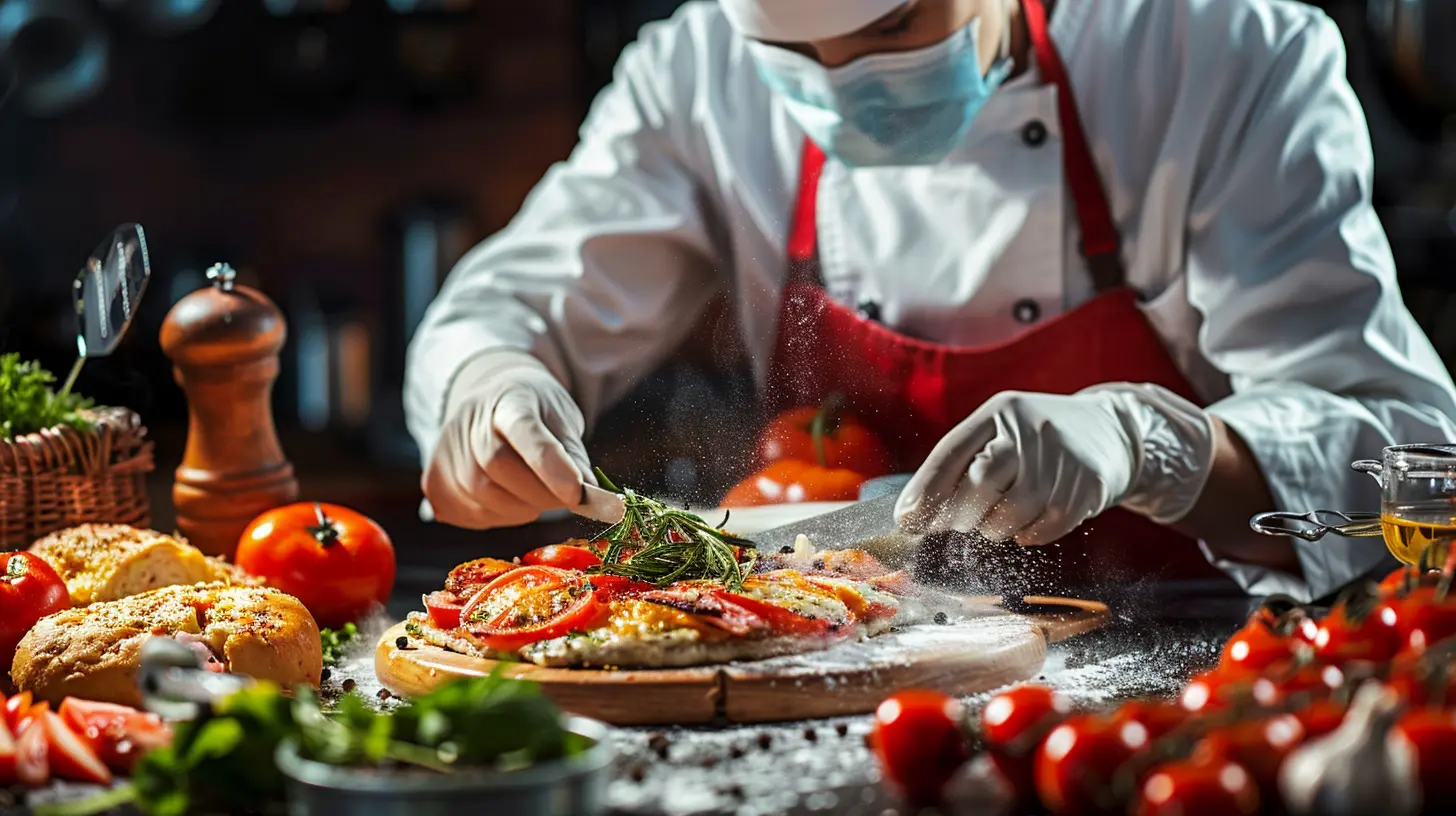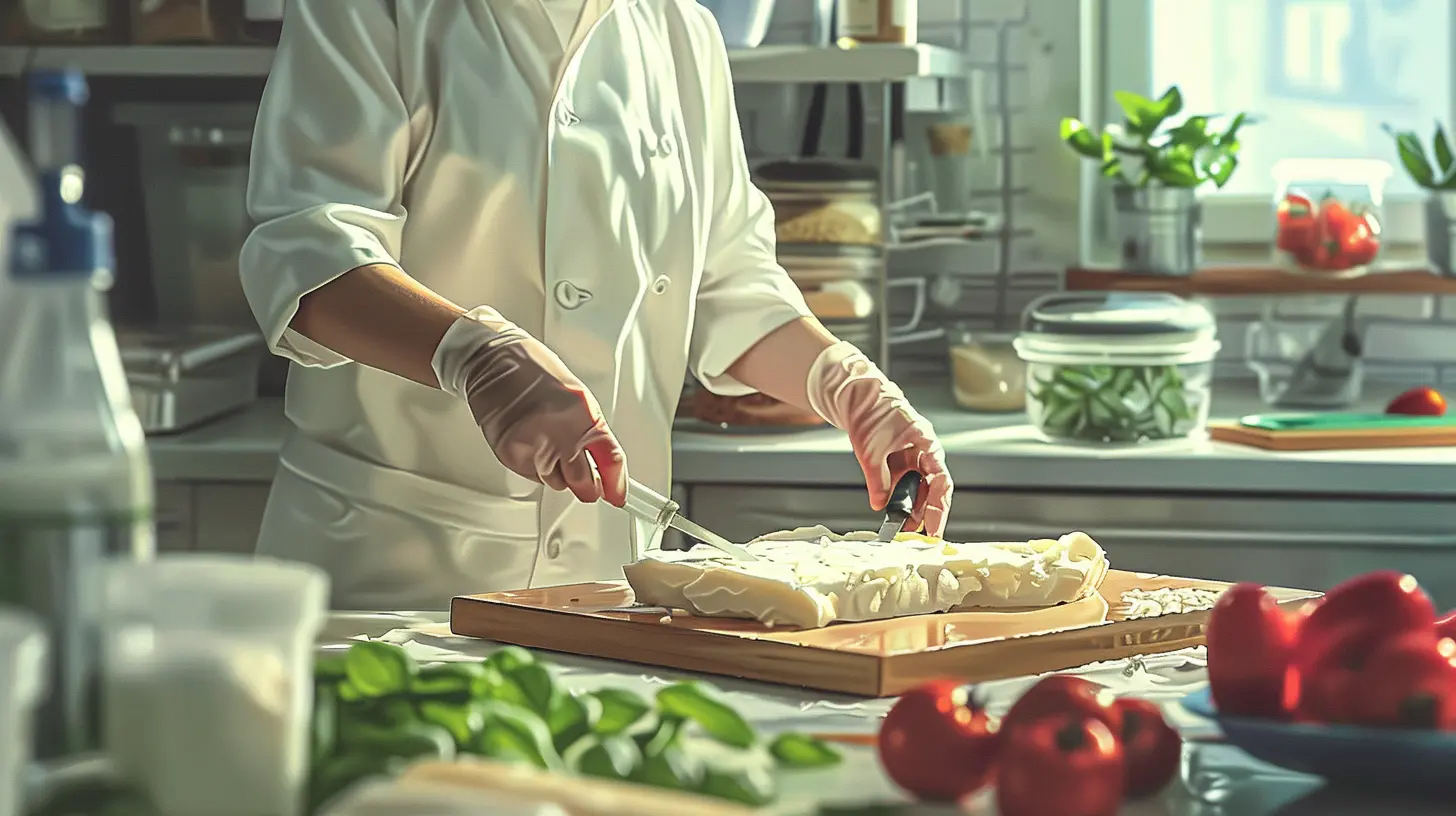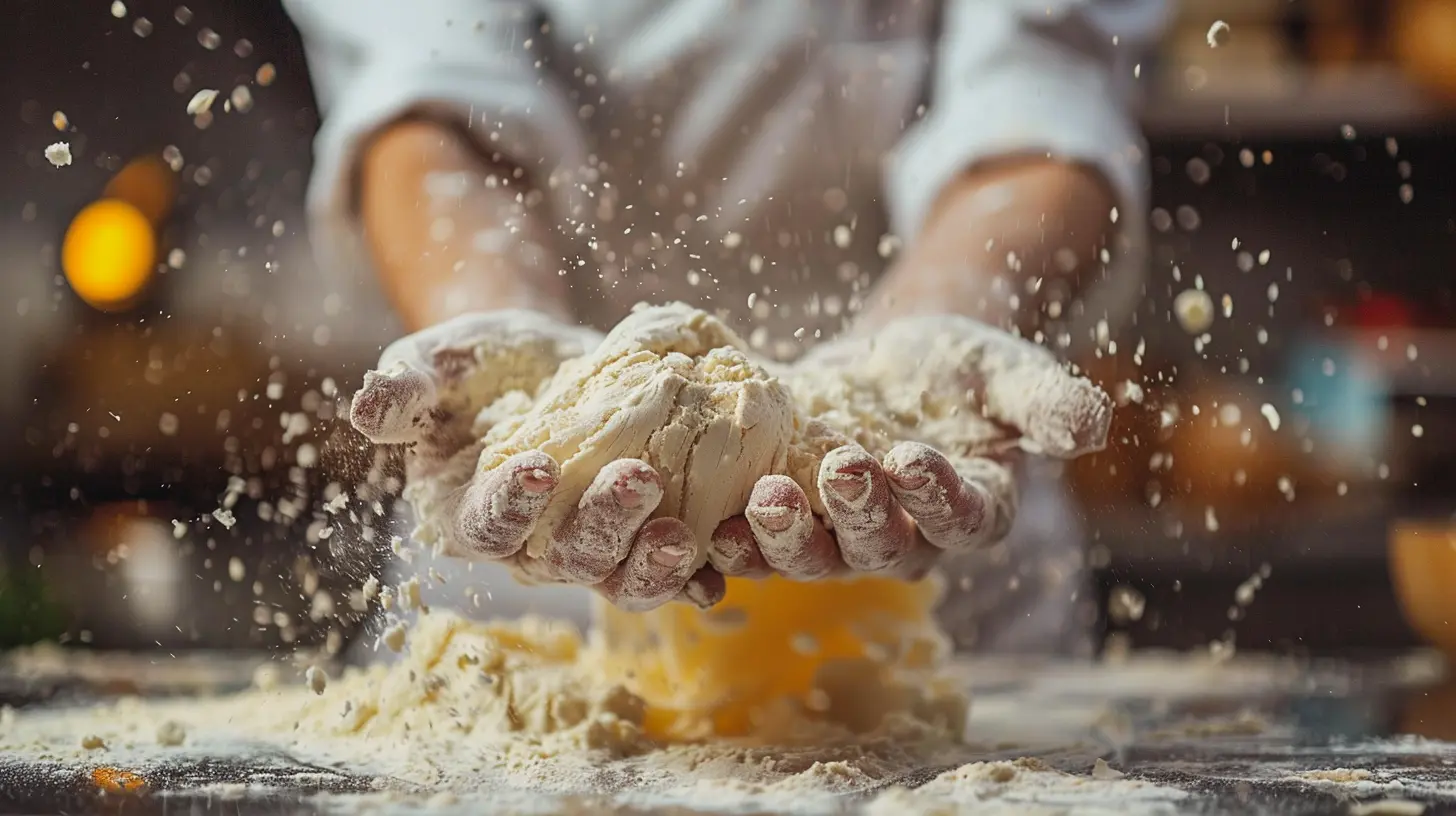Cross-Contamination Explained: Keeping Your Gluten-Free Diet Safe
9 August 2025
So, you’ve ditched gluten, waved goodbye to wheat, and said "see ya" to rye—and honestly, props to you! Whether you're managing celiac disease, gluten sensitivity, or just feel better without it, going gluten-free is no small feat. But here’s the kicker: even if you completely avoid obvious gluten offenders, cross-contamination can sneak in like a ninja and mess up your day. Ugh.
Let’s break down cross-contamination, why it’s a big deal, and how to keep your gluten-free lifestyle squeaky clean.
What Exactly Is Cross-Contamination?
Imagine you're cooking up a delicious gluten-free pasta. Then, someone stirs their regular spaghetti sauce (complete with wheat-based flour) using your gluten-free spoon. Bam! That spoon just betrayed you.Cross-contamination happens when gluten-free foods come into contact with gluten-containing foods, surfaces, utensils, or even airborne flour. A single crumb can be all it takes to trigger symptoms for someone with celiac disease or gluten sensitivity. Yikes, right?
So yes, even a teeny, almost invisible speck of gluten can be the villain in your gluten-free success story.
Why Is Cross-Contamination Such a Big Deal?
For folks with celiac disease, this isn’t about "a little stomach ache." It’s an autoimmune response that can damage the small intestine, cause intense symptoms, and seriously mess with nutrient absorption. Even if you're "just" gluten-intolerant, contamination can lead to bloating, brain fog, fatigue, and a general sense of “ugh.”Let’s just say, gluten contamination is more than just a dietary nuisance—it's a health hazard.
Where Does Cross-Contamination Happen?
Spoiler alert: It’s pretty much everywhere… if you’re not careful.1. In the Kitchen
The kitchen is like a gluten battlefield. Crumbs lurk in toasters, cutting boards, and colanders. That flour-covered whisk? It’s a traitor. Even wiping your counter with a used sponge can transfer gluten.2. At Restaurants
You say, “Gluten-free, please,” and the server nods. But then they slap your GF pizza on the same pan they used for regular ones. Oops. Unless a restaurant has dedicated gluten-free protocols, there’s always a risk—no matter how sweet the server is.3. At the Bakery (aka Gluten Central)
Flour particles can float around like tiny evil fairies. One swirl of a mixer, and they can travel far and wide, landing on what was once a safe, gluten-free treat. It’s dramatic, but it’s real.4. With Shared Equipment
Oh, your roommate made cookies in the stand mixer and didn’t clean it properly? That mixer is now a gluten crime scene. Blenders, toasters, and even deep fryers can become cross-contamination culprits.
Gluten-Free vs. Gluten-Friendly: Don’t Let the Labels Fool You
If you’ve ever been tempted to order that “gluten-friendly” brownie, hold on. That label doesn’t mean it’s 100% safe. Instead, it usually means they didn’t intentionally add gluten—but they also didn’t make sure it stayed away from it either.It’s like saying you’re “cat-friendly” but letting them sleep in a dog’s bed. Sounds nice. Not actually a fit.
Bottom line? If you have celiac disease or serious gluten issues, always go for products or places that are verified gluten-free.
How to Stop Cross-Contamination in Its Tracks
Okay, we’ve painted a very cautionary tale here. But don’t stress—once you know what to look for, protecting yourself becomes a habit. Let’s talk safeguards!1. Create a Gluten-Free Zone
No, you don’t need to overhaul your entire kitchen (although if you can, go for it). But it helps to have clearly marked areas for gluten-free prep. Think:- Separate sponges and dishcloths
- Dedicated gluten-free toaster (trust me on this one)
- Color-coded cutting boards
- A gluten-free shelf in the pantry and fridge
Treat gluten like glitter—it gets everywhere unless you contain it.
2. Label Everything Like a Pro
Use stickers or write right on your containers. If it’s gluten-free flour, slather that label on it like you’re at a garage sale. The fewer ingredients that get mixed up, the safer you are.3. Double Up on Some Appliances
Yes, it’s a little extra, but having doubles of certain tools is worth its weight in peace of mind. Think separate:- Toasters
- Wooden spoons (they absorb gluten—gross but true!)
- Colanders
- Oven mitts (because crumbs live there too!)
4. Educate Your Squad
Roommates, partners, your well-meaning grandma—everyone needs to be in the know. You don’t need to preach, but a friendly “hey, don’t use this pan for regular pancakes” message can go a long way.If they love you, they’ll wash that pan twice.
5. Be Restaurant Smart
When eating out, channel your inner detective. Ask questions like:- Do you have a dedicated gluten-free prep space?
- Do you use separate fryers?
- Are staff trained to prevent cross-contamination?
If the answers are vague or you get a blank stare, maybe just stick with the salad (but hold the croutons).
6. Check Your Packaged Goods
Even if a product doesn’t list wheat, check for cross-contamination warnings. Labels like “processed in a facility with wheat” should raise red flags. Some companies go the extra mile to minimize risk, and those are your new BFFs.Pro tip: Certified gluten-free symbols = golden.
What About Shared Households?
Sharing a kitchen with gluten-eaters? Challenge accepted.Here’s your survival guide:
- Use separate condiments. No double-dipping knives in the peanut butter.
- Store your stuff higher. Gravity = crumbs fall down.
- Keep gluten-free tools and foods in marked containers. Treat them like sacred artifacts.
- Make a cleaning routine. Wipe counters, wash hands, and be extra.
Also, get everyone on board with the mission. You’re not being dramatic—you’re protecting your health.
Airborne Gluten: Is It a Thing?
Yes—and it’s terrifying.If you’re in a bakery or kitchen where wheat flour is flying around, it can remain airborne for hours. That means your gluten-free cookie dough can get contaminated just by sitting there, minding its own business. Not cool.
So if you’re baking at home but others are using wheat flour, try to stagger the cooking times—or better yet, have a separate space.
Traveling While Gluten-Free
Ah, travel—the ultimate test of your gluten-free Jedi skills.Bring snacks. Always. Airports and gas stations aren’t exactly gluten-free paradises. A stash of trusted gluten-free granola bars will save you.
Research restaurants and supermarkets before you go. Apps like Find Me Gluten Free are lifesavers.
Carry a translation card if you’re heading somewhere the language barrier could be a problem. You don’t want to be miming “No gluten” over a baguette.
Myth-Busting Time!
Let’s squash a few common misconceptions while we’re here:- “A little gluten won’t hurt.” FALSE. Even trace amounts can trigger a reaction.
- “Gluten-free means healthy.” Not always. Sugar and processed junk can still be gluten-free.
- “Rinsing off food makes it safe.” Nope. That gluten’s in there, not just on the surface.
It’s Not About Perfection, It’s About Protection
Hey, no one expects you to become the gluten police 24/7. You’re doing your best, and that’s what counts. Cross-contamination can be sneaky, but with awareness and a few smart habits, you can protect your gut without losing your mind.And remember, every gluten-free warrior has had a misstep or two. The goal isn’t perfection—it’s progress (and digestion without drama).
Stay strong, stay savvy, and keep those gluten-free pancakes flipping!
Final Tips For Living Your Best Gluten-Free Life
- Join a support group. Whether online or local, it’s nice having folks who get it.- Try meal prepping. Less risk, more control.
- Get creative in the kitchen. Gluten-free doesn’t mean flavor-free.
- Celebrate the wins. Found a safe bakery? Tell everyone!
- Trust your gut—literally. If something feels off, skip it.
all images in this post were generated using AI tools
Category:
Gluten FreeAuthor:

Angelo McGillivray
Discussion
rate this article
1 comments
Tilly Carey
This article effectively highlights the crucial link between cross-contamination and gluten exposure, emphasizing practical strategies for maintaining a safe gluten-free diet in everyday settings.
August 21, 2025 at 2:38 AM

Angelo McGillivray
Thank you for your feedback! I'm glad you found the article helpful in understanding the importance of preventing cross-contamination for a safe gluten-free diet.


